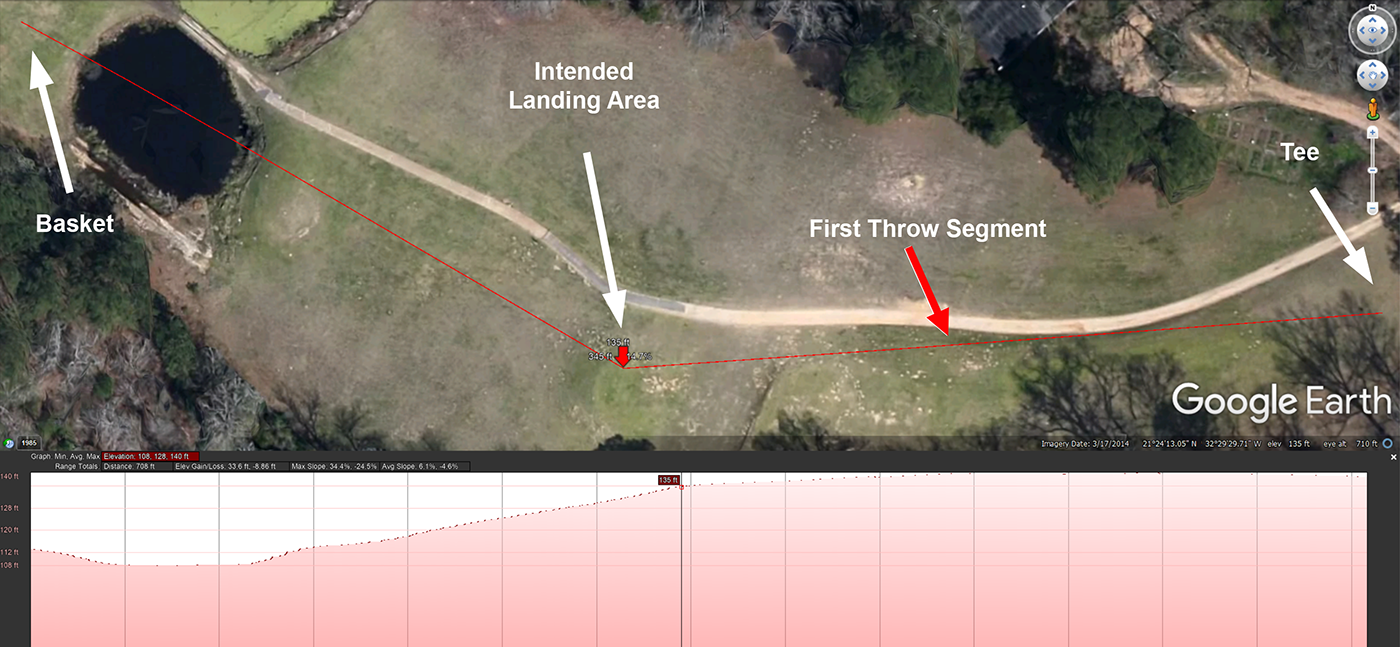- Joined
- Jul 6, 2012
- Messages
- 1,312
I am designing a disc golf course on a golf course. The following hole will be an intended par 4, blue/white level. Tees will be movable so the distances can be adjusted, but, over mostly level ground, what should the approximate distance be to the intended landing area to make it reasonably reachable for this skill group (i.e., how long should the first throw segment be)?
The intended landing area is at the beginning of an elevation drop that should give most blue/white players the opportunity to reach the basket on their second shot (but maybe not?) if they want to go for it. For players who get past the intended landing area on their first shot, it will be a little easier to reach that basket. The red arrow at the point where the line bends is at the beginning of the slope, 345' from the basket with about 30 feet of elevation change downhill.

The intended landing area is at the beginning of an elevation drop that should give most blue/white players the opportunity to reach the basket on their second shot (but maybe not?) if they want to go for it. For players who get past the intended landing area on their first shot, it will be a little easier to reach that basket. The red arrow at the point where the line bends is at the beginning of the slope, 345' from the basket with about 30 feet of elevation change downhill.

Last edited: